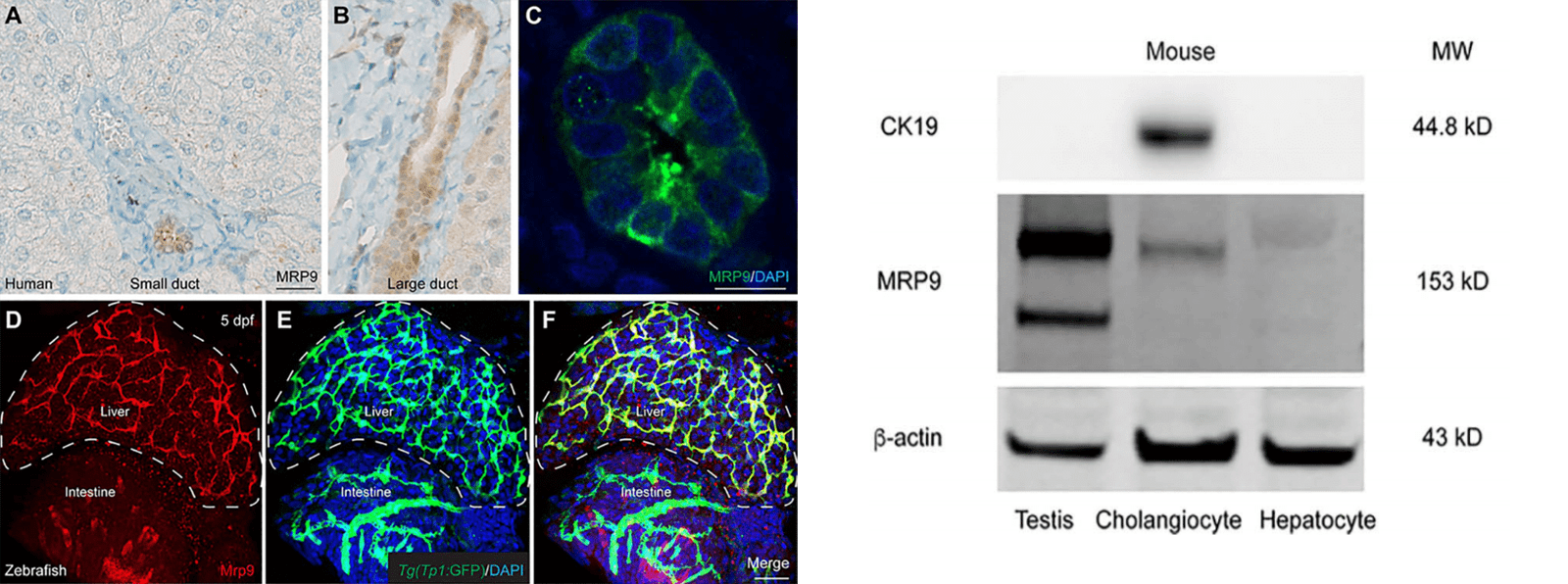ABCC12 Gene Mutations Tied to Idiopathic Chronic Cholestasis
Published July 2021 | Gastroenterology
Research led by Chunyue Yin, PhD, and Alexander Miethke, MD, uncovered a novel candidate gene for inherited chronic cholestasis and a potential therapeutic target for progressive intrahepatic bile duct loss. Cohorts of children with idiopathic chronic cholestasis were surveyed with whole exome and candidate gene sequencing.
Researchers collaborated with the Molecular Genetics Laboratory at Cincinnati Children’s and with the multicenter, NIH-funded consortium ChiLDReN. They found a homozygous deleterious variant in the gene ABCC12 — in just one patient. This gene encodes multidrug resistance-associated protein 9 (MRP9) that belongs to the adenosine 5'-triphosphate-binding cassette transporter C family with unknown function and no previous implication in liver disease.
“Variants in ABCC12 had never been connected to cholestasis,” Yin says. “Nothing was known about the function of this gene and its protein product.”
With little previous study on ABCC12, researchers developed two animal models to validate the causality of ABCC12 variants in cholestasis. They created zebrafish and mouse ABCC12 mutants in-house, plus assays, reagents and tools to study ABCC12.
There were many trials and failures, Yin says. What’s now known is that MRP9 deficiency renders cholangiocytes susceptible to bile acid-induced death in zebrafish and mouse models. Yin and Miethke have submitted an R01 grant proposal to investigate how loss of ABCC12 causes cholangiocyte death and cholestasis. Understanding that mechanism could help develop personalized treatments.
A retrospective analysis for rare variants in ABCC12 from more than 770 next generation sequencing (NGS) cases with cholestasis also is underway, in collaboration with the Cincinnati Children’s Division of Human Genetics.
MRP9 Protein Was Expressed in Cholangiocytes in Human, Zebrafish and Mouse

(A-B) Chromogenic detection of MRP9 protein in the control liver of a child without known liver disease. (C) Confocal single plane image showing expression of MRP9 protein (green) in the intrahepatic bile duct in the control human liver. (D-F) Confocal three-dimensional projections showing MRP9 protein expression (image D) and Tg(Tp1:GFP) transgene expression (image E) in the intrahepatic bile ducts in WT zebrafish at 5 days post fertilization (dpf). Image F shows the merged image of D and E. (G) Immunoblotting of protein lysates from mouse testis (positive control), purified primary intrahepatic cholangiocytes, and hepatocytes with antibodies against CK19, MRP9, and loading control β-actin. Molecular weights (MW) are listed. Scale bars: (A) 20 μm; (B) 10 μm; (C-E) 30 μm.





